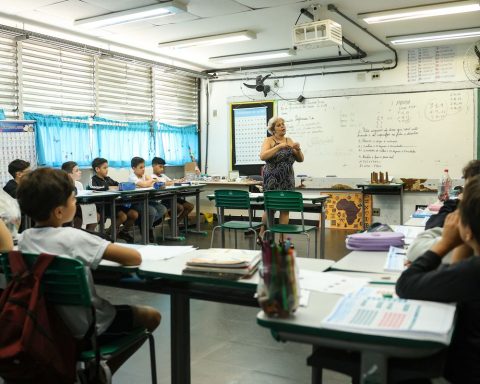A strain of the Sars-CoV-2 virus that has been spreading around the world was detected in Brazil. The lineage, called XEC, which belongs to the Omicron variant, was identified in Rio de Janeiro, São Paulo and Santa Catarina. The first finding was made by the Oswaldo Cruz Institute (IOC/Fiocruz) in samples referring to two patients living in the capital of Rio de Janeiro, diagnosed with covid-19 in September. The identification was carried out by the IOC Respiratory Virus, Exanthematous, Enterovirus and Viral Emergencies Laboratory, which acts as a reference for Sars-CoV-2 with the Ministry of Health and the World Health Organization (WHO).
The Ministry of Health and the State and Municipal Health Secretariats of Rio de Janeiro were quickly informed about the finding. The decoded genetic sequences were deposited on the platform online Gisaid on September 26th and October 7th. After the sequences from Rio de Janeiro, other groups of researchers also deposited genomes of the XEC lineage decoded in São Paulo, from samples collected in August, and in Santa Catarina, from two samples collected in September.
Monitoring
XEC was classified by the WHO on September 24 as a variant under monitoring. This occurs when a strain presents mutations in the genome that are suspected of affecting the behavior of the virus and the first signs of a “growth advantage” are observed in relation to other variants in circulation. This variant began to attract attention in June and July 2024, due to the increase in detections in Germany. It quickly spread across Europe, the Americas, Asia and Oceania. At least 35 countries have identified the strain, with more than 2,400 genetic sequences deposited on the Gisaid platform as of October 10 of this year.
According to researcher at the Laboratory of Respiratory Viruses, Exanthematics, Enteroviruses and Viral Emergencies at IOC Paola Resende, data from abroad indicate that XEC may be more transmissible than other strains, but it will be necessary to evaluate its behavior in Brazil. “In other countries, this variant has shown signs of greater transmissibility, increasing the circulation of the virus. It is important to observe what will happen in Brazil. The impact of the arrival of this variant may not be the same here because the population’s immunological memory is different in each country, due to the lineages that have already circulated in the past”, explains Paola, who also works at the Fiocruz Genomic Network.
The detection of XEC in Brazil was carried out based on a surveillance strategy that expanded the sequencing of Sars-CoV-2 genomes in the capital of Rio de Janeiro in August and September. This action was in partnership with the Municipal Health Department of Rio de Janeiro. During three weeks, samples were collected from swab nasal tube for sending to the IOC/Fiocruz Reference Laboratory in cases positive for Sars-CoV-2 diagnosed by rapid tests in basic health units. Although it indicated the presence of XEC, monitoring confirmed the predominance of the JN.1 lineage, which has been the majority in Brazil since the end of last year.
“We carried out this action to understand in real time what was happening in Rio, as there was a slight increase in Covid-19 diagnoses in the city. This was very important to detect the XEC variant, which will need to be monitored from now on”, detailed the virologist.
Current data from the Municipal Health Department of Rio de Janeiro and Infogripe, from Fiocruz, do not indicate an increase in Covid-19 cases in the city. The virologist warns of the weakening of genomic surveillance of SARS-CoV-2 in Brazil and reinforces the need to maintain monitoring throughout the national territory.
“Currently, we are without genomic data from several states because there has been no collection and sending of samples for genetic sequencing. It is very important that this monitoring is maintained homogeneously in the country to monitor the impact of the arrival of the XEC variant and detect other variants that could change the Covid-19 scenario”, highlighted Paola.
The virologist also reinforced that data on the Sars-CoV-2 genomes in circulation are relevant for adjusting the composition of Covid-19 vaccines. The WHO has a technical advisory group on the topic, which meets twice a year. In April, the committee recommended the formulation of immunizers based on the JN.1 lineage. The next meeting is scheduled for December.
Origin
Analysis indicates that XEC arose through genetic recombination between strains that were previously circulating. The phenomenon occurs when an individual is infected by two different viral strains simultaneously. In this situation, the genomes of the two pathogens may mix during the viral replication process. The XEC genome contains excerpts from the genomes of the KS.1.1 and KP.3.3 lineages. Furthermore, the lineage presents additional mutations that may confer advantages for its dissemination.

















